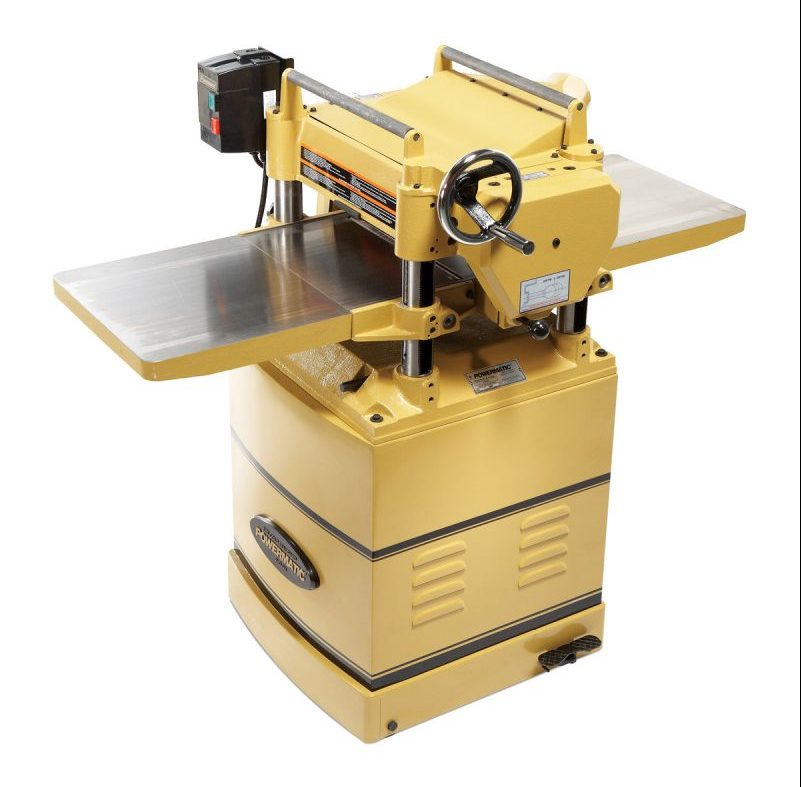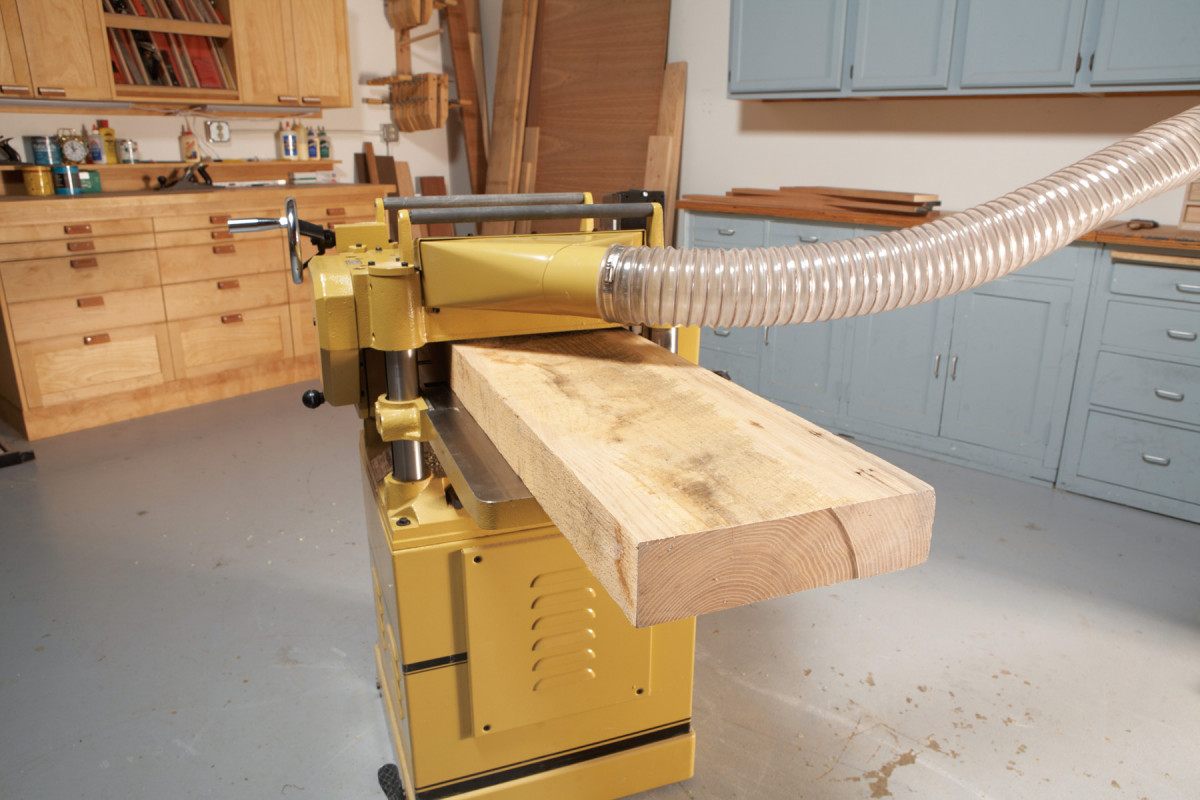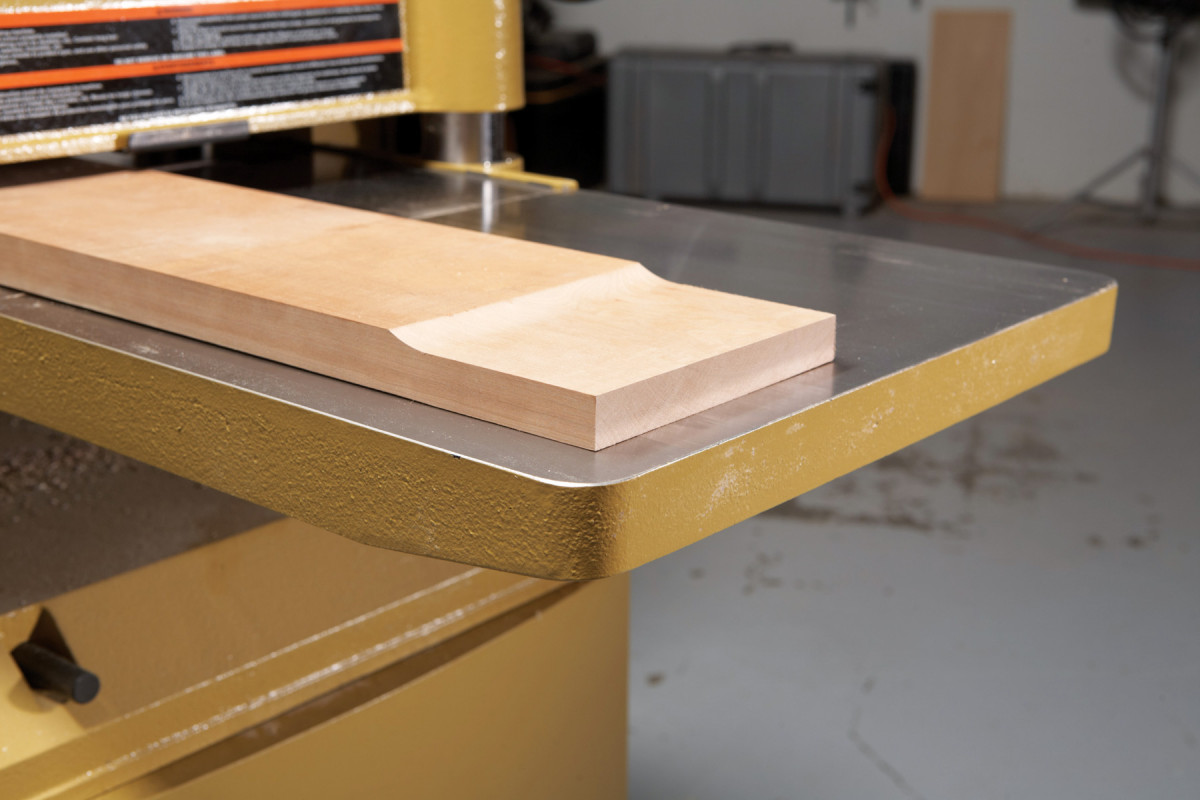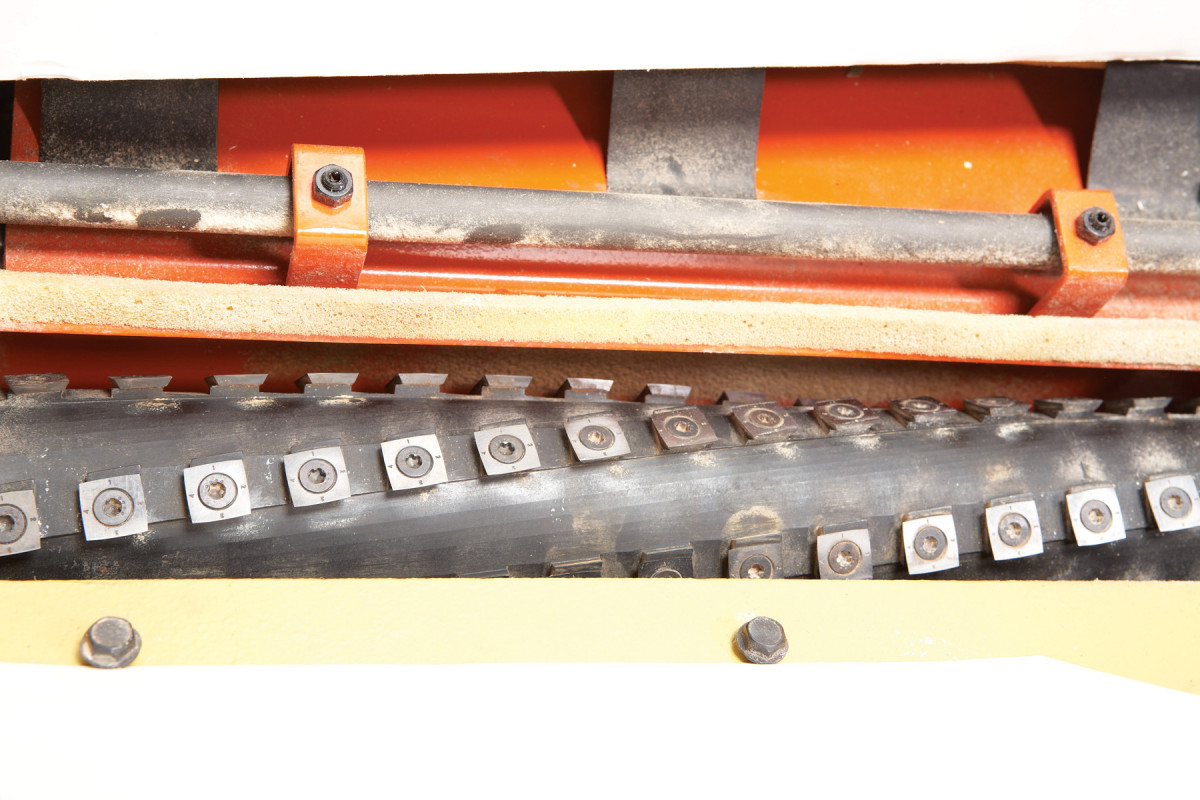We may receive a commission when you use our affiliate links. However, this does not impact our recommendations.

Tool: Powermatic 15HH
Manufacturer: Powermatic
MSRP: $3199
A powerful planer gets the job done much faster.
Remember the ’65 Ford Thunderbolt? The ’67 Olds Cutlass? The ’69 Pontiac GTO? They’re classic muscle cars—rods with powerful engines, designed for speed. The world of planers has its muscle cars, too—machines with plenty of horsepower and the capacity to quickly mill dozens of boards. The Powermatic 15HH is an outstanding example.
Check out the specs: a 3hp, 240 volt induction motor, a 15″ wide helical cutterhead and a 4′ long cast-iron bed, all totaling more than 500 lbs. of wood-eating metal. This is a huge step up from most portable planers, which have less power and mass. If you have a portable planer and are frustrated by how long it takes to remove a lot of material, maybe it’s time to get out of the sedan and move up to the muscle-car class.
More work in less time

Cruise through huge boards This planer’s 4′ long cast-iron bed can easily support this 3″ thick, 80 lb. monster board.
There are two ways in which a planer like the 15HH can get the job done faster. First, you can take a much deeper bite with each pass—about twice as much as a portable planer. Second, you can feed in multiple boards side by side, up to the full 15″ width of the machine. This technique, called gang-planing, does require caution. To avoid kickback, never gang plane boards that are of unequal thickness or boards that are warped in any way. Gang planing only works with boards that have been jointed first, then planed to the same thickness, one board at a time.
A planer with an induction motor, such as the 15HH, will last much longer than a planer with a universal motor (the type found on most portable planers). This planer’s motor is rated to run continuously—all day, if necessary. If you see a lot of planing in your future, and want a machine that won’t wear out anytime soon, then the 15HH or a similar 240 volt planer is the way to go.
Tames big boards
A big planer is better equipped than a portable planer to handle big boards, particularly long and heavy ones. The infeed roller on the 15HH, which pulls the wood through the planer, is a 2″ dia. steel rod with serrated ridges that bite into the wood. The infeed roller of a portable planer, by contrast, is smaller in diameter and has a smooth surface; it relies on friction alone to pull the wood through the machine. A serrated roller, backed by a 3 hp motor, can pull heavy timbers through a planer much better than a smooth roller. Muscle planers like the 15HH also have two smooth non-powered rollers on the planer’s bed, under the cutterhead, for a heavy timber to ride on. (They’re adjustable from 0″ to 1/16″ in height). Portable planers don’t have this feature.
The bed of the 15HH, like other muscle planers, is a long, solid cast-iron surface. It won’t deflect or twist under the weight of a large timber. The bed of a portable planer is not nearly as strong or stiff, because most of its length is composed of two folding stamped-steel wings.
Snipe: not beat yet

Hog off a big bite Powered by a 3 hp motor, this planer can cut 3/16″ deep on material up to 5-1/2″ wide, 1/8″ deep on 15″ wide stock.
There’s one aggravating problem that a muscle planer won’t solve for you, however: snipe. It’s still there. (Snipe is the slightly deeper cut that a planer takes on the leading and trailing edges of a board.)
The best work-around to eliminate snipe is the same method you’d use with a portable planer: Butt your boards end-to-end as you feed them.
Superior performance

Under the hood: a helical head The carbide inserts on this planer’s cutterhead are skewed at 14°. They make a shearing cut, which produces a smoother surface with less tearout. A planer with a helical head is also much quieter than one with a straight cutterhead.
Muscle is just half the story with the 15HH. Outstanding performance is the other part, and that’s mostly due to the planer’s carbide insert cutters and helical head (the “HH” in “15HH”). According to Powermatic, this head delivers a smoother surface, with less tearout, than a standard straight-line cutterhead. Plus—and this is a huge deal—it’s much quieter.
Carbide cutters will plane many more board feet than standard HSS knives before getting dull. When it comes time to put a new set of edges to work, you just unscrew and rotate the inserts. No leveling is required.
The 15HH uses a Byrd Shelix head, which is currently state of the art in planers. All of the inserts cut at a skew angle. Some muscle planers have somewhat similar heads with carbide inserts arranged in a helical pattern, but the inserts aren’t skewed. They make a chopping cut, like a straight knife, rather than a shear cut. According to Powermatic (and this agrees with our own observations), a shearing cut minimizes tearout.
Here are some supplies and tools we find essential in our everyday work around the shop. We may receive a commission from sales referred by our links; however, we have carefully selected these products for their usefulness and quality.








